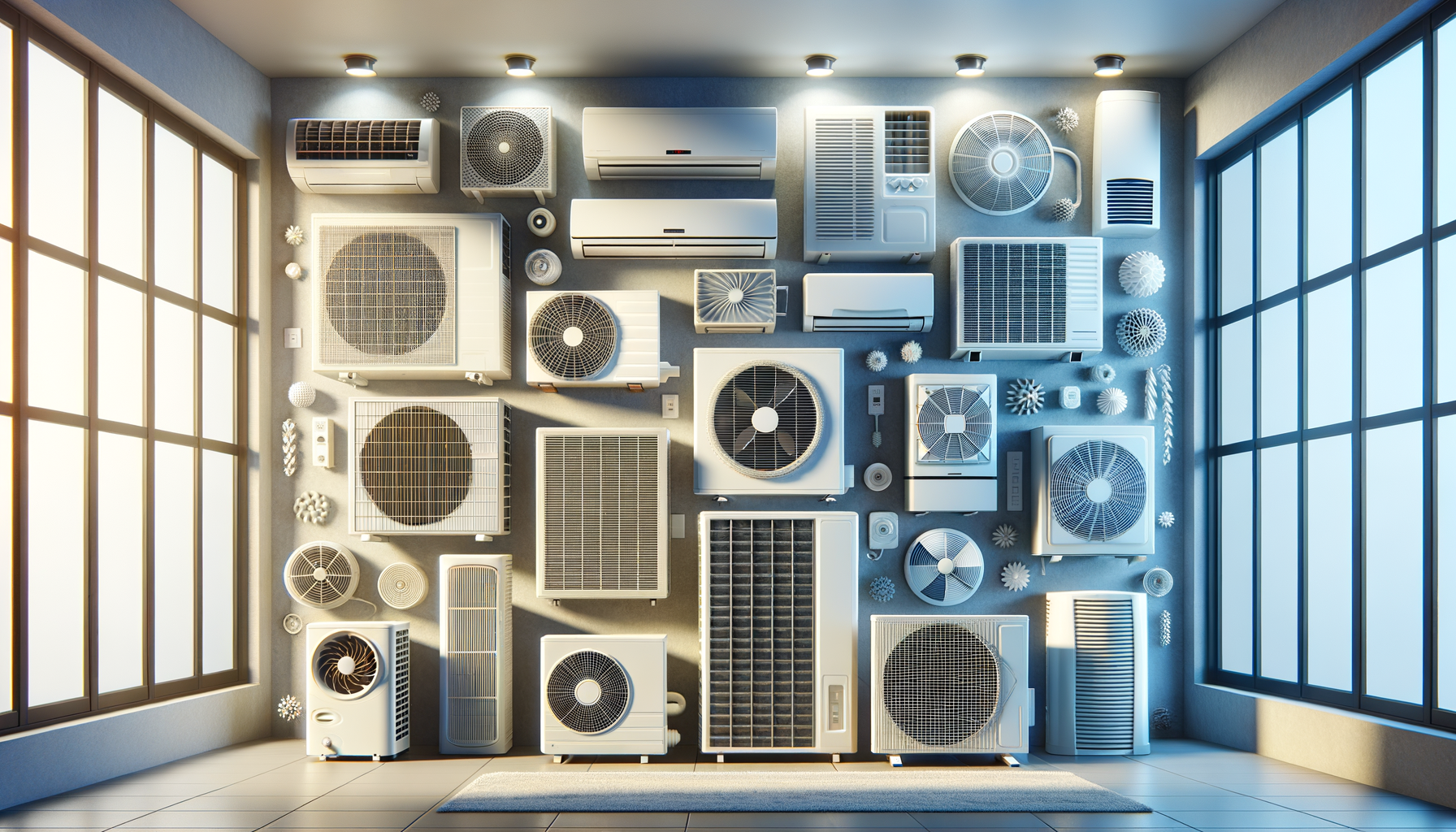Understanding Air Conditioner Types
Air conditioners come in various types, each designed to suit different needs and environments. The most common types include window units, split systems, portable units, and central air conditioning. Window units are compact and fit into a window space, making them ideal for small rooms or apartments. Split systems are more versatile, consisting of an indoor and outdoor unit, and are suitable for cooling larger spaces. Portable air conditioners are freestanding and can be moved from room to room, offering flexibility. Central air conditioning is a comprehensive solution for cooling entire homes, distributing air through ducts.
When choosing an air conditioner, consider the size of the space you need to cool, energy efficiency, and installation requirements. For example, a window unit might be sufficient for a small bedroom, while a split or central system is better for a larger living area. Energy efficiency is crucial for reducing electricity bills and environmental impact, so look for units with high Energy Efficiency Ratio (EER) ratings.
Each type has its pros and cons:
- Window units: Affordable, easy to install, but limited to small spaces.
- Split systems: Quiet, efficient, but require professional installation.
- Portable units: Flexible, no installation needed, but can be less efficient.
- Central systems: Comprehensive cooling, but higher initial cost and installation.
The Importance of Energy Efficiency
Energy efficiency is a key factor when selecting an air conditioner. An energy-efficient unit not only saves money on electricity bills but also reduces the environmental impact. Air conditioners are rated using the Energy Efficiency Ratio (EER) or the Seasonal Energy Efficiency Ratio (SEER). The higher the rating, the more efficient the unit.
Investing in an energy-efficient air conditioner can lead to significant savings over time. For instance, a unit with a SEER rating of 16 uses about 30% less energy than a model with a rating of 12. This can translate to hundreds of dollars in savings annually, depending on usage and electricity rates.
Moreover, many regions offer rebates or incentives for purchasing energy-efficient appliances, making them even more cost-effective. Consider these factors when shopping for an air conditioner:
- Check for ENERGY STAR certification.
- Look for units with programmable thermostats.
- Consider models with variable speed compressors for better efficiency.
Installation and Maintenance Considerations
Proper installation and maintenance are crucial for the optimal performance of an air conditioner. Incorrect installation can lead to inefficiencies and increased energy consumption. For window and portable units, ensure they are securely fitted to prevent air leaks. Split and central systems require professional installation to ensure all components are correctly connected and functional.
Regular maintenance extends the lifespan of your air conditioner and ensures it operates efficiently. This includes cleaning or replacing filters, checking for refrigerant leaks, and ensuring the evaporator and condenser coils are clean. Many manufacturers recommend annual servicing to keep the unit in top condition.
Here are some maintenance tips:
- Clean filters every month during peak usage.
- Inspect the seals around the unit to prevent air leaks.
- Schedule professional maintenance annually.
Cost Implications and Budgeting
The cost of an air conditioner can vary significantly based on the type, brand, and features. Window units are typically the most affordable, with prices ranging from $150 to $500. Portable units can cost between $200 and $700, while split systems range from $500 to $2,500. Central air conditioning systems are the most expensive, often costing $3,000 to $7,000, including installation.
When budgeting for an air conditioner, consider not just the initial purchase price but also installation costs and long-term operating expenses. Energy-efficient models may have a higher upfront cost but can save money on electricity bills over time. Additionally, factor in potential maintenance and repair costs.
To make an informed decision:
- Compare prices across different brands and models.
- Consider the cost of professional installation.
- Calculate potential energy savings with efficient models.
Conclusion: Making an Informed Choice
Choosing an air conditioner is a significant decision that impacts comfort, energy consumption, and expenses. By understanding the different types of air conditioners, prioritizing energy efficiency, and considering installation and maintenance requirements, you can make a well-informed choice that suits your needs and budget.
Remember, the right air conditioner can enhance your indoor environment, providing relief during hot months while being mindful of energy use and costs. Evaluate your specific needs, explore options, and consult with professionals if necessary to ensure you select an air conditioning system that aligns with your lifestyle and financial considerations.
Ultimately, an informed choice leads to improved comfort and satisfaction, ensuring your investment in an air conditioner is worthwhile.



Leave a Reply